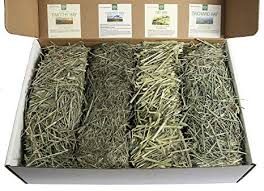Hay...what's the big deal?Buying hay can feel complicated at times especially with a picky eater. 1st cut, 2nd cut, 3rd cut…. What’s the difference? Here we will discuss this! 1st cutFirst cut hay is just as it sounds! It is the first cut of the season out of the field before it blooms. This hay usually has thinner stems but it's more stemy than leafy. It's higher in fiber content and lower in protein and fat content. The color will be lighter with more yellow and brown parts. This is a good quality hay for rabbits. If you have a rabbit that is overweight or is prone to getting G.I stasis, than this is the hay for them. Click on the link to order 1st cut timothy hay->> 1st cut hay 2nd cutSecond cut hay is a good hay for healthy adult rabbits. It usually has more leaves on the stems which is more attractive to your rabbit. This hay is greener than 1st cut and not as stemy. The protein and fat content is a little higher than 1st cut and the fiber level is a bit lower. Click on the link to order 2nd cut timothy hay->> 2nd cut hay 3rd cutThird cut is a very soft and heavy leafy hay. It should be a darker green than 1st and 2nd cut. It's higher in protein and fat content and lowest in fiber content. This hay should be given as a treat or you can mix it sparingly with 1st or 2nd cut hay if your rabbit is a picky hay eater. If you have a rabbit that is underweight, this is an ideal hay to give them as it's higher in protein and fat which should help weight gain. Be watchful of your buns poos. If you notice softer poos, besides their cecotropes, than cut back on this hay. Click on the link to order 3rd cut timothy hay->> 3rd cut hay Not sure what your rabbit will prefer?Sometimes it's best to let your rabbit sample each kind of hay and see what they like best. Small Pet Select has a sampler box that has 1st, 2nd, 3rd cut timothy hay, and also orchard grass.
Click on the link to order your sampler box->> Sampler Box
2 Comments
Rabbits DietIt's very important that your rabbits get the right amount of nutrients every day. Feeding your rabbit incorrectly can lead to obesity, dental issues, and possibly even death. Rabbits are more sensitive animals than a cat or dog so making sure they have the correct diet is vital to their well being.
|


 RSS Feed
RSS Feed